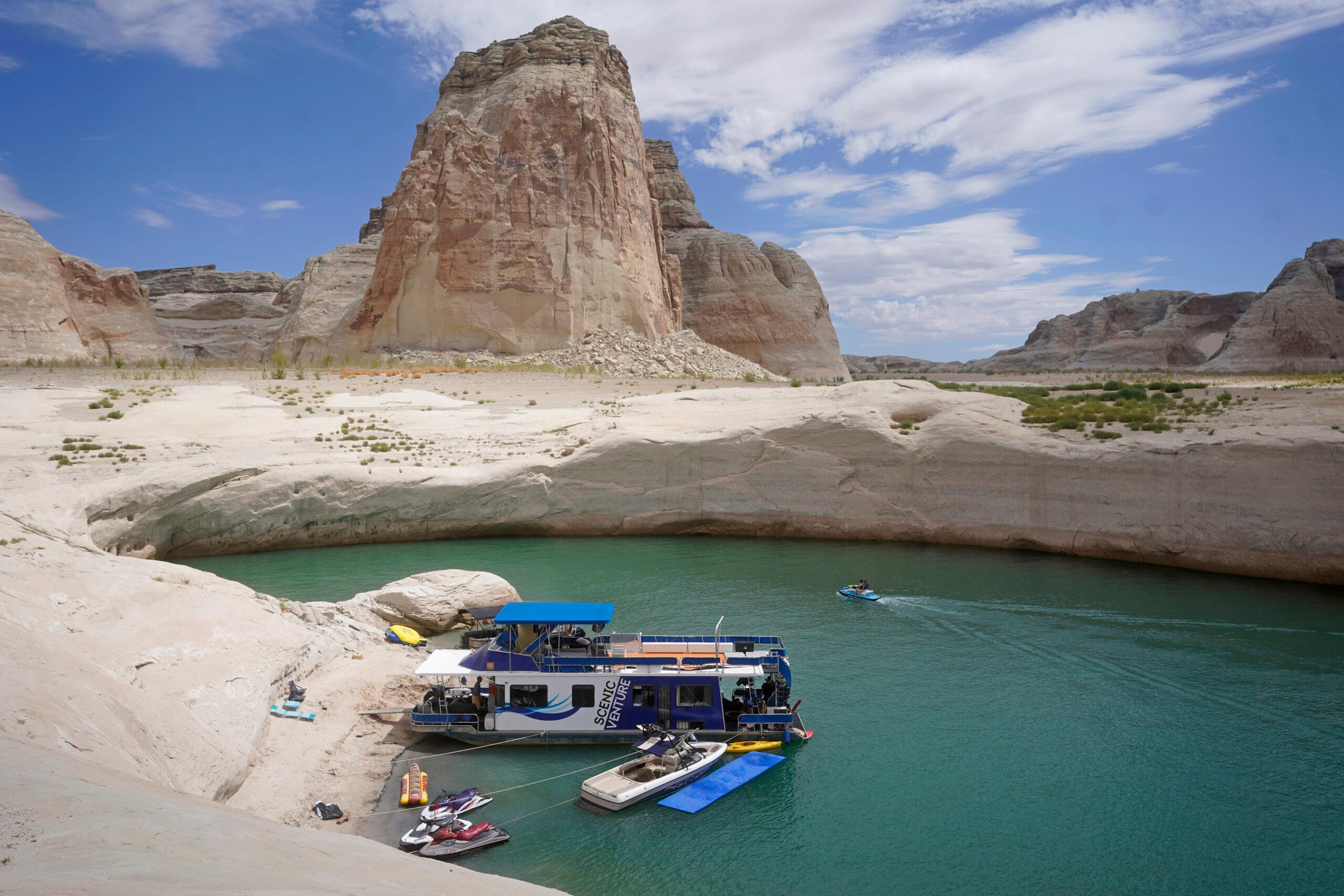
The U.S. Bureau of Reclamation announced on Tuesday emergency plans to protect Lake Powell on the Utah-Arizona border by holding back water releases to downstream states.
The reservoir has plummeted to its lowest level on record amid more than 20 years of record-breaking drought in the Colorado River Basin.
This is the first time the agency has moved to delay a release of water from Lake Powell that normally goes to Arizona, California and Nevada. Instead, the federal agency plans to keep more than 480,000 acre-feet of water in the reservoir to prop up supplies to protect hydropower production.
Lake Powell, the country’s second-largest reservoir, is fed by a Colorado River storage system that supplies water and hydroelectric power to millions of people across the West. Climate change is contributing to a steep and rapid decline in the available supply of water.
Water levels in the lake have dropped close to “dead pool,” the lowest point at which Glen Canyon Dam can generate hydropower. The Bureau of Reclamation is invoking its authority to change how the dam and the reservoir will operate this year to help ensure the dam’s turbines keep spinning.
In a separate action announced last month, upper-basin states worked with the Bureau of Reclamation on a plan to send another 500,000 acre-feet to Lake Powell from Flaming Gorge Reservoir on the Utah-Wyoming border under their drought response agreement for the year. A similar action was taken last year when water from Flaming Gorge and Blue Mesa Reservoir in Colorado was sent to Powell because of drought and dropping reservoir levels. There are no plans to release additional water from Blue Mesa to Lake Powell this year.
The combined nearly 1 million acre-feet added to Lake Powell will help protect the reservoir and its infrastructure over the next 12-months. Tanya Trujillo, Interior Assistant Secretary for Water and Science, said the action gives the agency more time to figure out how to operate Glen Canyon Dam at lower water levels.
Trujillo said the move to hold water in Lake Powell was an “extraordinary action.”
“We have never taken this step before in the Colorado River Basin, but the conditions we see today and the potential risks we see on the horizon demand that we take prompt action,” she said at a Monday press conference.
Trujillo said the 30 Native American tribes in the basin were consulted, as were the states and partners in Mexico that also rely on the Colorado River. Trujillo said the agency received “consensus support” for these actions to protect Powell.
The federal government’s move to store more water in Lake Powell is a temporary solution. Trujillo said Colorado River water users need to “immediately engage” in developing additional conservation measures, including water recycling, innovative water storage ideas and repairing aging, inefficient pipes and other water infrastructure.
“We all have to find ways to maximize efficiency and use less water,” she said.








